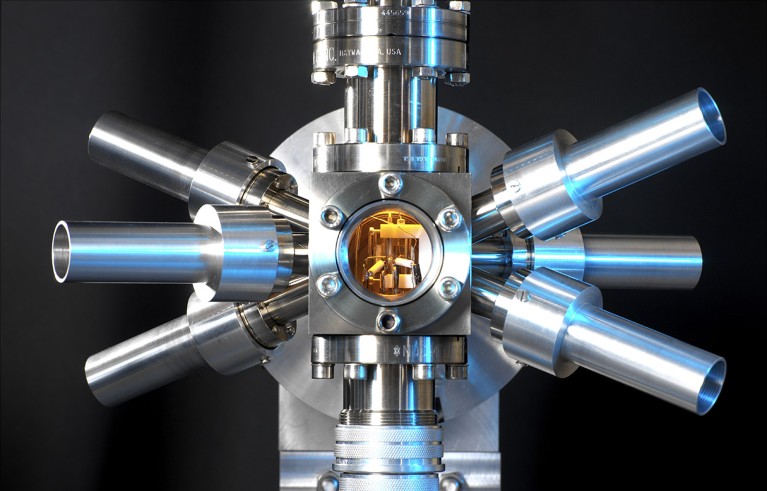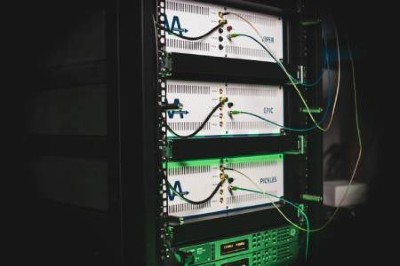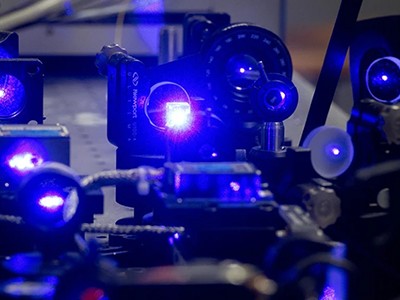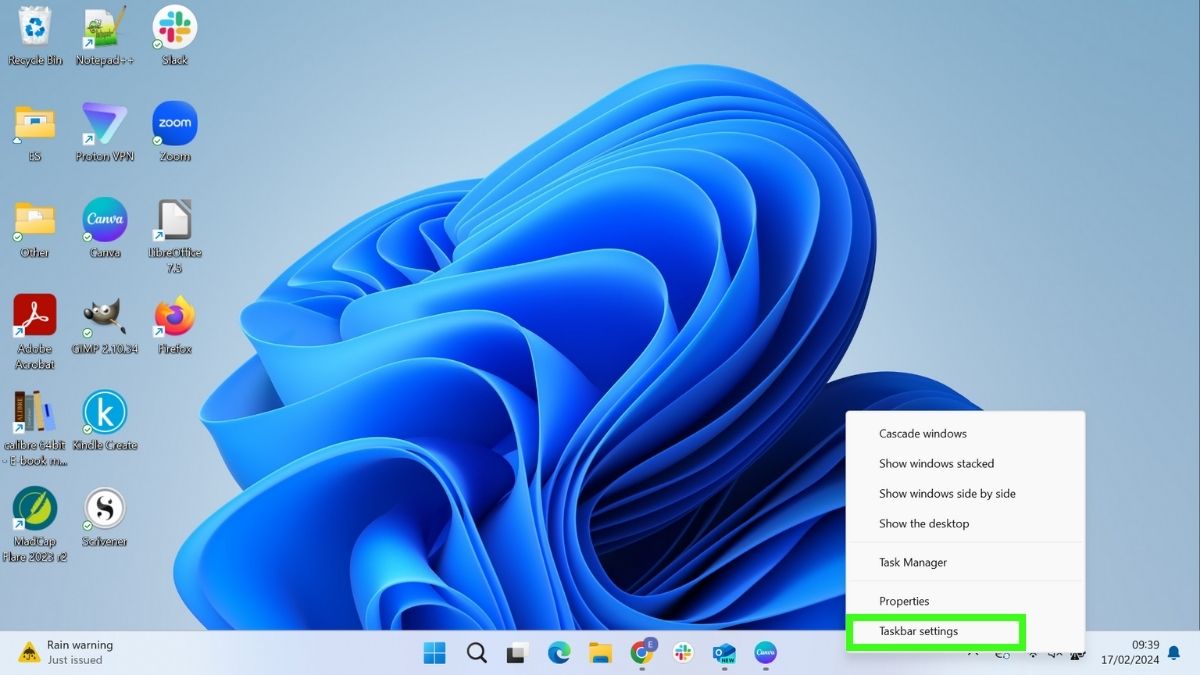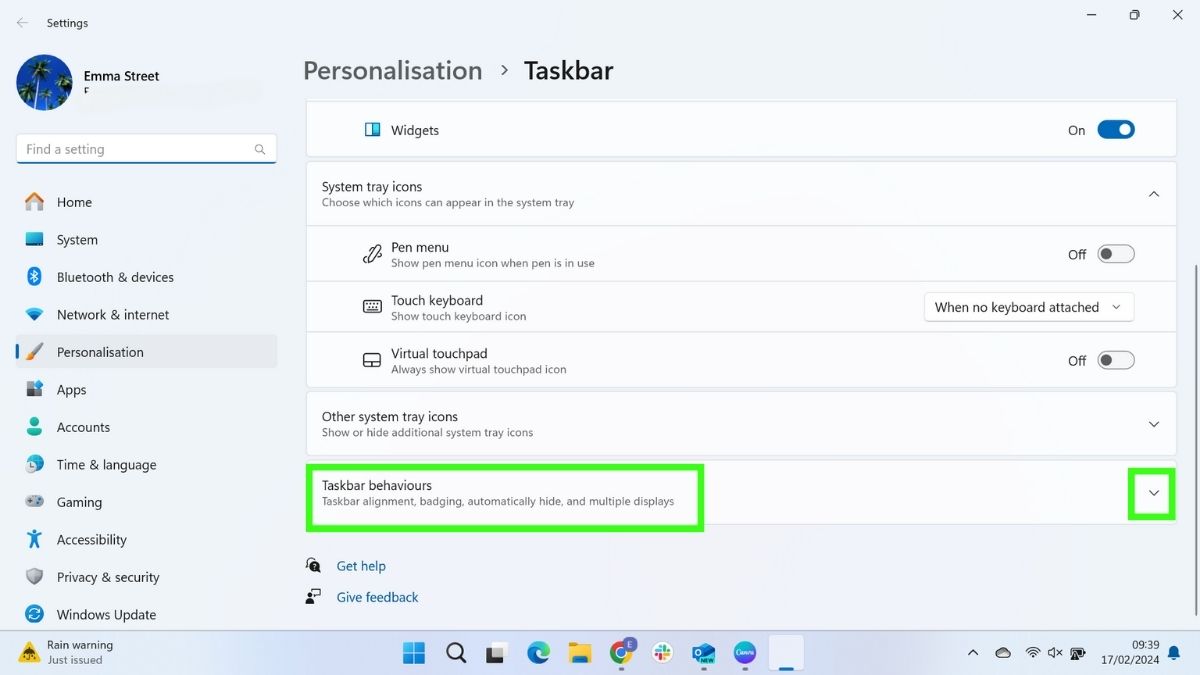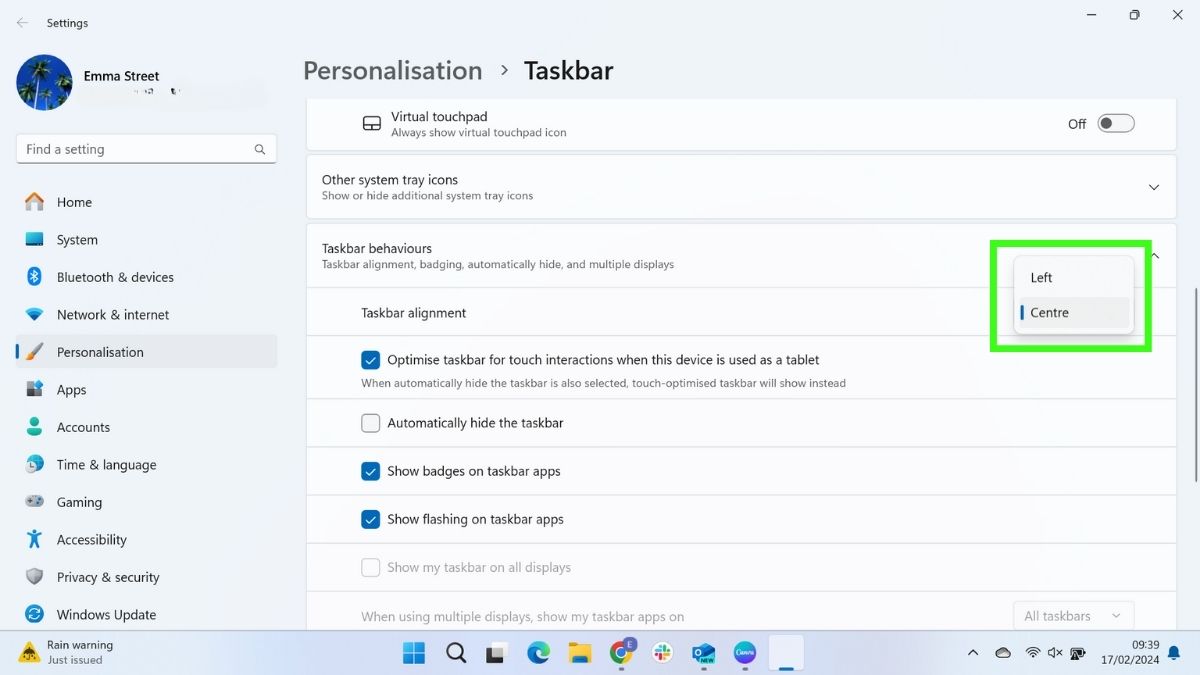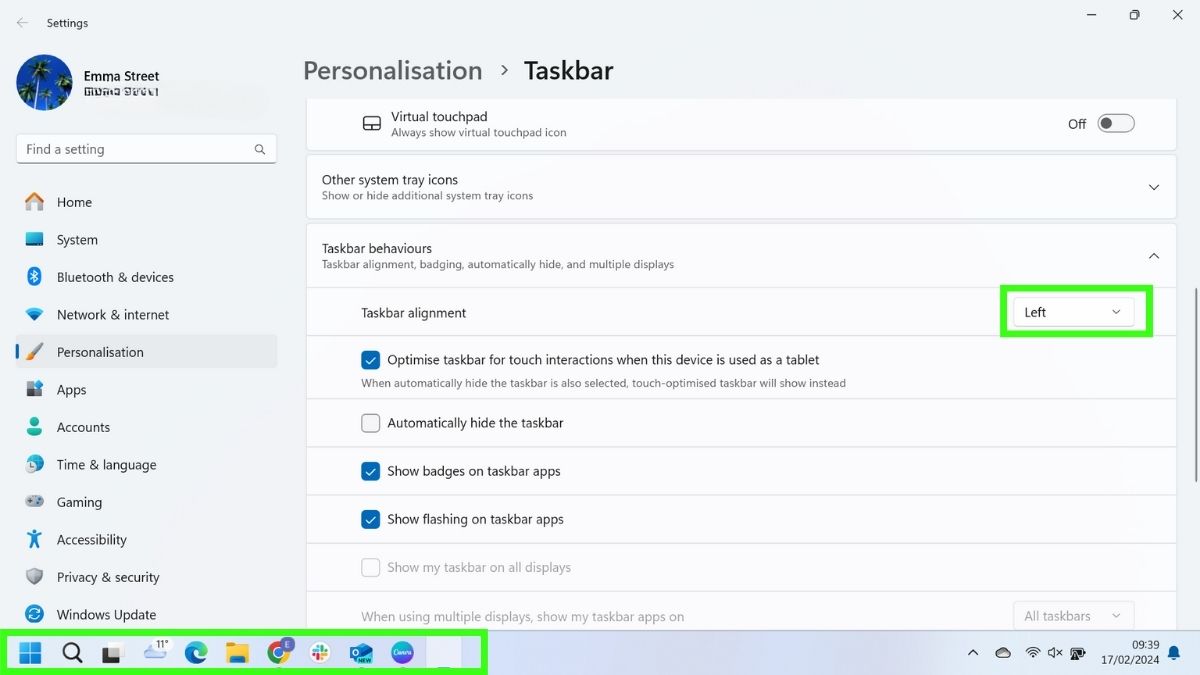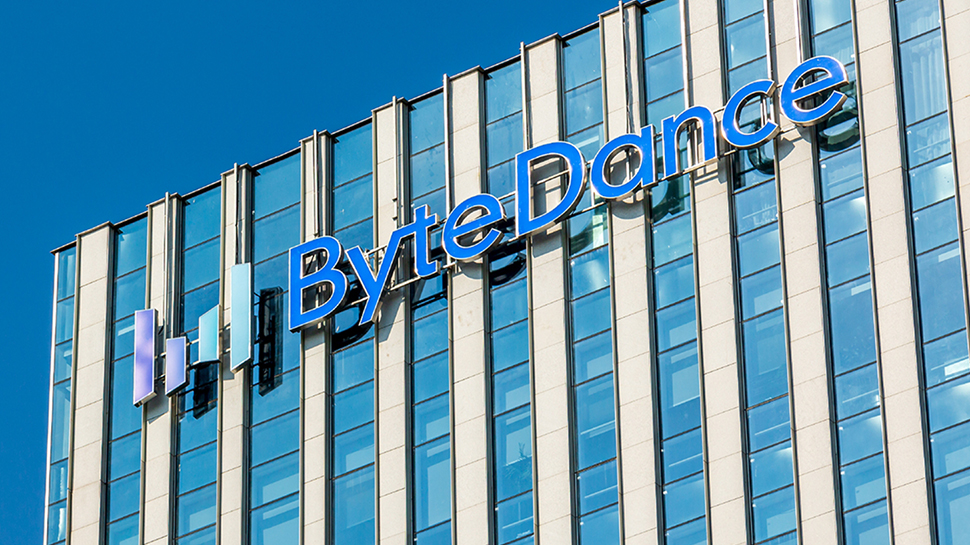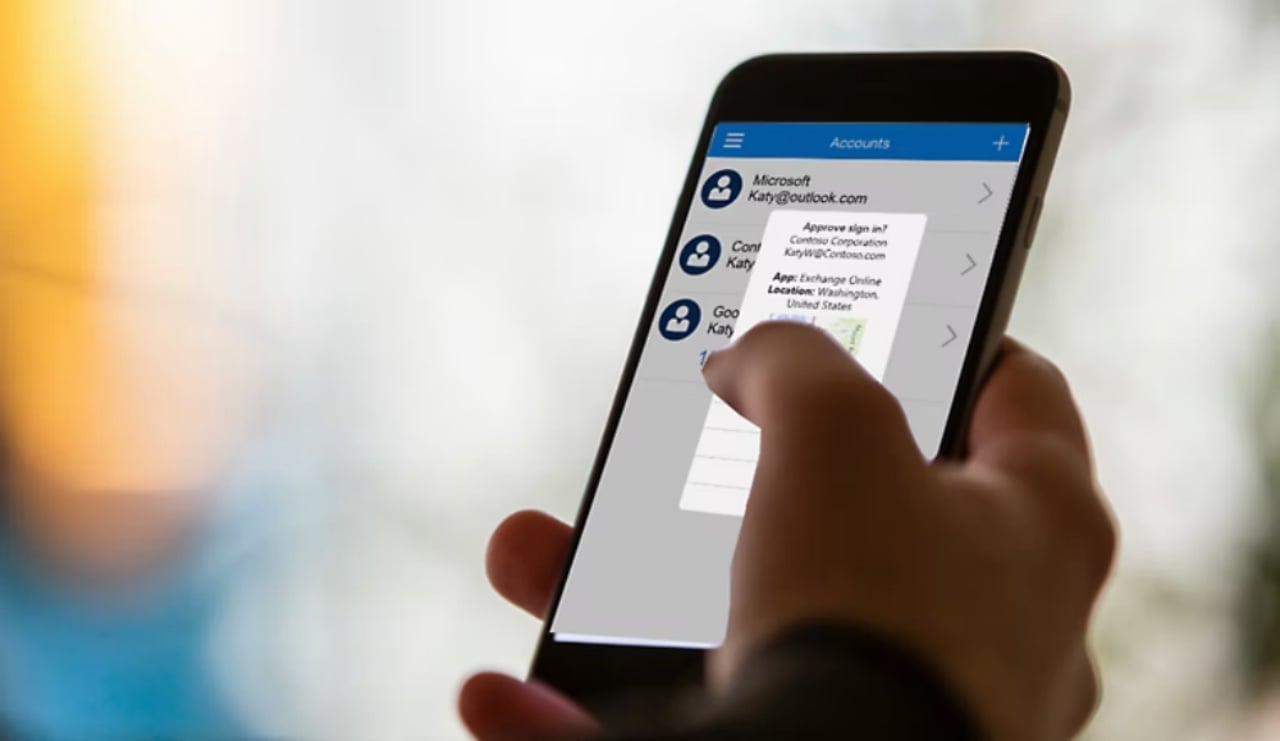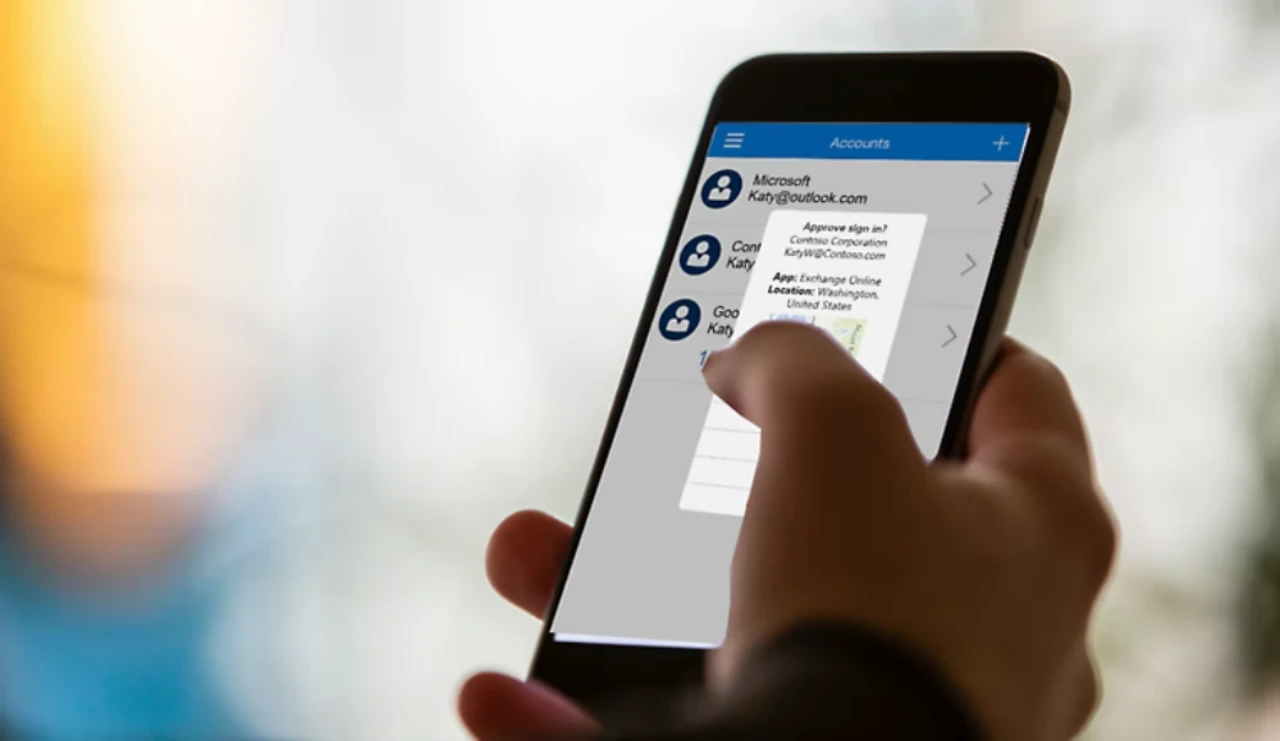[ad_1]
Todo el mundo tiene su punto óptimo cuando se trata de informática móvil. Para una persona, una computadora portátil de 11 pulgadas puede ser ideal para llevar, mientras que a otra persona tampoco le importa una computadora portátil de 18 pulgadas. Pero ¿qué pasa con una computadora de escritorio completa?
Este año, HP presentó un producto que combina lo mejor de ambos mundos, con el objetivo de ofrecer la practicidad de una PC todo en uno (AIO) y una computadora portátil. llamado Computadora portátil todo en uno HP Envy Move Está repleto de algunas opciones de hardware y funciones de software interesantes. Este dispositivo único, que puede considerarse un dispositivo todo en uno (AIO), está diseñado para un grupo específico de usuarios: aquellos que desean la potencia y la familiaridad de una computadora de escritorio, pero también la flexibilidad para moverla. Las PC todo en uno tradicionales son de tamaño pequeño, pero siguen siendo estacionarias y requieren una conexión constante a la alimentación. Envy Move pretende cambiar eso mediante el uso de una batería incorporada y una solución sencilla para llevarlo contigo a donde quieras. Pero con las computadoras portátiles con pantallas plegables y pantallas duales que ya están en el mercado, ¿tiene algún sentido una AIO portátil? Sigue leyendo para descubrirlo.
Precio de la computadora de escritorio HP Envy Move All-in-One en India
El HP Envy Move tiene un precio de Rs. 1,24,999 en India para la variante única disponible en Clamshell White. Este modelo cuenta con un procesador Intel Core i5 de 13.ª generación con gráficos Intel UHD. Hay 16 GB de RAM LPDDR5 y 1 TB de almacenamiento PCIe NVMe M.2. Dentro del paquete minorista, los consumidores recibirán HP Envy Move, un adaptador de 90 vatios y un teclado Bluetooth inalámbrico con panel táctil incorporado.
![]()
El HP Envy Move viene con un teclado inalámbrico
Revisión de la computadora de escritorio HP Envy Move All-in-One: diseño y visualización
HP Envy Move presenta un diseño de dos tonos que utiliza policarbonato y malla en el chasis. En la parte delantera, el sistema de altavoces se esconde debajo de la parrilla con el logo cromado de HP. En la parte posterior del escritorio hay un logotipo de HP más grande grabado en cromo. Encima hay un asa con la que se puede levantar el ordenador. El mango también tiene el mismo esquema de color, pero su bisagra está hecha de cuero, lo que le agrega un elemento premium. En el lado derecho, la computadora de escritorio tiene el puerto de alimentación, el puerto HDMI 1.4b, los botones de control de brillo y el interruptor de encendido. El lado izquierdo tiene un puerto USB tipo C (10 Gbps), un puerto USB tipo A (10 Gbps) y controles de volumen. También tiene un obturador de privacidad para su cámara web en la parte superior. Todo el dispositivo pesa 4,1 kg, lo que puede no parecer mucho para una máquina de escritorio, pero es bastante pesado para los estándares de una computadora portátil. Durante las pruebas, nos resultó muy difícil levantarlo con el asa.
Cuando no se guarda ni se transporta, HP Envy Move utiliza patas giratorias que solo se bloquean en su posición cuando se colocan sobre una mesa, que también están hechas de policarbonato. El escritorio se siente estable cuando se coloca sobre la mesa y no se tambalea en absoluto. Esto es bueno, porque HP imagina a sus usuarios llevando consigo esta computadora de 4 kg dentro de su casa mientras hacen ejercicio, e incluso cuando la usan niños.
El HP Envy Move viene con una pantalla táctil QHD IPS de 23,8 pulgadas con una resolución de 2560 x 1440 píxeles. HP afirma un brillo máximo de 300 nits, que me pareció bastante bajo cuando lo usé en una habitación bien iluminada.
![]()
Viene equipado con una pantalla táctil.
No es tan evidente cuando la fuente de luz se redirige hacia él. Noté esto principalmente al fotografiar el producto para esta revisión. La pantalla táctil responde muy bien y no tuve problemas en este frente, pero la resolución parece un poco baja en esta pantalla dado el tamaño de la pantalla. He visto algunas películas en Envy Move, ya que está dirigida a personas que necesitan una máquina de entretenimiento, pero los niveles de saturación fueron bastante decepcionantes en esta película y la nitidez también fue un poco baja. La pantalla QHD está bien para el trabajo y el uso de aplicaciones, pero no alcanza el punto óptimo cuando se trata de entretenimiento, donde hubiera preferido una pantalla más nítida.
Revisión de la computadora de escritorio HP Envy Move All-in-One: teclado, parlantes, panel táctil y cámara
El teclado que utiliza tiene un trackpad incorporado que puede resultar un poco incómodo para los usuarios que compran una computadora de escritorio y esperan usar un mouse y no un trackpad. Sin embargo, el trackpad responde y las teclas también son táctiles, y es una configuración compacta cuando se transporta de una habitación a otra.
El HP Envy Move cuenta con un sistema de altavoces duales de 5 vatios sintonizados en asociación con Bang and Olufsen. Esta calidad de sonido es lo suficientemente buena para ver películas o incluso escuchar música, pero no espere que proporcione unos graves sorprendentes mientras mira una película de acción o música con graves potentes.
![]()
El sistema de altavoces está rodeado por material de malla.
En el lado de la cámara, HP Envy Move usa una cámara web de 5 megapíxeles que admite Windows Hello y también se puede usar para hacer clic en fotografías. Utiliza cierto grado de IA para reducir el ruido durante las videollamadas, pero el vídeo aún no se ve lo suficientemente nítido. La cámara cuenta con el respaldo de micrófonos duales para una mejor recepción de audio.
Revisión de la computadora de escritorio HP Envy Move All-in-One: especificaciones y software
HP Envy Move no tiene mucha personalización en lo que respecta a sus especificaciones principales. La computadora de escritorio todo en uno viene en una única versión con SSD PCIe NVMe M.2 de 1 TB y 16 GB de RAM LPDDR (soldada) y no hay actualizaciones disponibles. En cuanto al procesador, HP Envy Move viene con un procesador Intel Core i5 1335U de 13.a generación y gráficos Intel UHD, y tampoco hay ninguna actualización aquí. Esto puede resultar algo restrictivo para los consumidores finales, pero luce bien para una PC doméstica básica centrada en multimedia y entretenimiento. La computadora de escritorio utiliza un cable de alimentación para su funcionamiento, pero está equipada con una batería de iones de litio de 83 Wh y 6 celdas que se puede cargar con un adaptador de 90 W.
![]()
Viene con un interruptor físico para bloquear la cámara web a voluntad.
El dispositivo todo en uno se puede cargar al 50 por ciento en 45 minutos, lo que equivale aproximadamente a los resultados de mi prueba. En términos de conectividad inalámbrica, el HP Envy Move cuenta con Wi-Fi 6E y Bluetooth 5.3.
Revisión de la computadora de escritorio HP Envy Move All-in-One: rendimiento y juegos
Este todo en uno puede manejar la mayoría de las aplicaciones de productividad con facilidad, incluido Adobe Photoshop e incluso Adobe Premiere Pro hasta cierto punto con ediciones de 1080p que no son muy ricas en GFX. Durante la visualización, hace calor y el ventilador hace mucho ruido. En cuanto a los puntos de referencia, ejecuté Geekbench, donde obtuvo una puntuación de 1602 para un solo núcleo y 3975 para varios núcleos. El Todo-en-Uno no es compatible con Cinebench R23. El HP Envy Move no está diseñado para juegos, pero jugué algunos juegos en él. Y no le fue muy bien. Forza Horizon 5 funcionó bien a alrededor de 60 fps en la configuración ideal, pero una vez que aumenté la configuración, los fotogramas cayeron drásticamente. Esto ejecutará bien juegos casuales, pero cualquier jugador hambriento de gráficos tendrá dificultades con esta máquina, por lo que está lejos de ser ideal como plataforma de juegos.
Revisión de la computadora de escritorio HP Envy Move All-in-One: duración de la batería
Si bien HP Envy Move se puede alimentar mediante un cable de alimentación, su batería interna resulta especialmente útil cuando hay un corte de energía o cuando tiene que mover su escritorio de un lugar a otro sin perder el estado actual de su computadora. Aunque la batería es la fuente secundaria de energía de este dispositivo, dura aproximadamente 4 horas, lo cual es muy impresionante.
Revisión de la computadora de escritorio HP Envy Move All-in-One: veredicto
En pocas palabras, HP Envy Move tiene más sentido en casa que en la oficina. Sirve como pantalla secundaria para quienes la necesitan debido a la batería de respaldo. En teoría, es una forma conveniente de continuar con su trabajo o ver entretenimiento, mientras pasa de una habitación a otra.
Sin embargo, en Rs. 1,24,999 Es bastante caro considerando el hardware que se ofrece y luego está el hecho inevitable de que pesa la friolera de 4 kg. Sería mejor utilizar una tableta grande (pero compacta) (Android o iPad) para entretenimiento mientras viaja. Además de ser más livianos, también son menos costosos y durarán más porque son más eficientes energéticamente. También hay computadoras portátiles más grandes como la Zenbook Duo de Asus que ofrece pantallas plegables de hasta 19 pulgadas de ancho (o tan altas) si lo que necesita es un caballo de batalla compacto, pero a un precio ligeramente más alto (Rs 1,59,990 en adelante).
HP Envy Move todavía tiene mucho sentido si necesita una PC todo en uno compacta que pueda mover por su casa ocasionalmente porque, seamos realistas, no es tan liviana como una computadora portátil. No está destinado a reemplazar su computadora portátil y definitivamente tampoco reemplazará su tableta. Esto significa que atrae a un grupo muy específico de usuarios que pueden encontrarlo como el lugar perfecto, pero más adecuado para el trabajo y la productividad que para el entretenimiento.
Computadora portátil todo en uno HP Envy Move
precio: Rs. 1,24,999
Positivos
- Calidad de construcción sólida
- La batería de a bordo es una buena adición
- El sistema de altavoces proporciona una buena salida de audio.
contras
- La pantalla podría ser más brillante y le falta ajuste
- No es ideal para aplicaciones de servicio pesado
- Rendimiento gráfico básico
[ad_2]
Source Article Link



